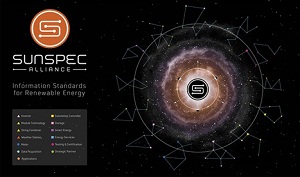SunSpec Alliance offers inaugural round of awards for collaborating on solar
 While many solar companies are are working to define their products and wares as unique, the SunSpec Alliance is working to reduce the costs of solar by standardizing certain parts of the industry, like interconnections and mounting. It announced its first annual SunSpec awards, recognizing companies and others that are working to standardize parts of the solar industry.
While many solar companies are are working to define their products and wares as unique, the SunSpec Alliance is working to reduce the costs of solar by standardizing certain parts of the industry, like interconnections and mounting. It announced its first annual SunSpec awards, recognizing companies and others that are working to standardize parts of the solar industry.
Winners of this year’s awards were Silver Spring Networks, SolarBridge Technologies, Boston, and international companies Solar Frontier from Japan and SolarEdge Technologies from Israel. Silver Spring was recognized for its smart grid integration work, Solar Frontier for general excellence and its response to Japan’s tsunami. Boston and SolarEdge for their open standards and SolarBridge for forging an alliance between SunSpec and the UPVI Alliance.
“This is the third year of operations and first year of issuing awards for SunSpec,” said Thomas Tansy, SunSpec chairman. “It’s taken some time to build up critical mass. We now have close to 60 members.”
Among its members are Enphase Energy, Fronius, General Electric, Siemens, SunPower and Advanced Energy.
The alliance also has thus far developed eight specifications which will increasingly be seen in the field starting this year. Among the specifications the organization has created is a module specification.
“That specification was really brought about because of microinverters,” Tansy said.
Such specifications make it easier for module manufacturers and microinverters to be interoperable.
The lack of standardized equipment in the solar industry is a key inefficiency, according to Tansy.
“These standards don’t happen without some effort. Typically they don’t happen organically at first,” he said—particularly when some see proprietary processes or connections as a sales factor. “Proprietary is part of the marketplace. But the benefits of standards have been realized in so many sectors it’s hard [to ignore them].”
Component suppliers for solar will find that by standardizing connections, for instance, they can expand their sales opportunities to a larger number of clients, according to Tansy.
The standards also help increase transparency and interoperability. And if one component manufacturer ceases to make a product, it could still be offered by another manufacturer, offering purchasers more stability.



